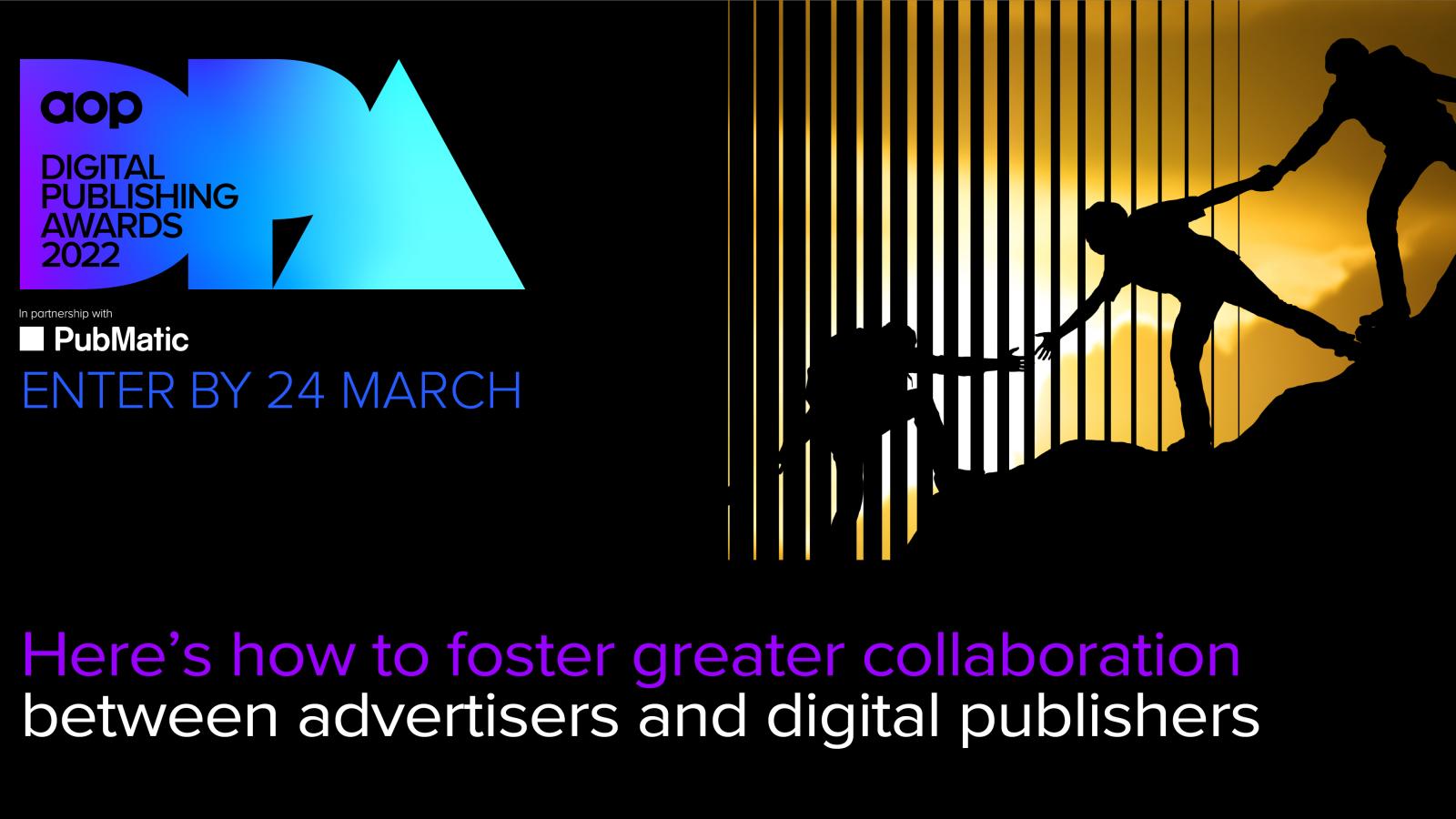
Unlocking creativity post-COVID
Published: 14 Mar 2022
Last year showed us an industry that surpassed expectations to not just survive but to thrive too. We saw this determination and resilience shining through in the entries to the AOP Digital Publishing Awards last year, but what will the 2022 entries tell us about how our industry is moving forwards?
We believe that the entries will reveal an industry that’s refusing to rest on its laurels – one that is continuing to innovate and deliver above and beyond. In the run-up to the entry deadline (March 24 – don’t forget!), we asked members of our 2022 jury how they’re future-proofing their organisation and promoting greater creative thinking within their teams.
Some of the best creative thinking comes from new experiences, new interactions that send ideas sparking. As Liv Horner, Product Manager at Haymarket, told us, “it’s difficult to be creative or innovative when you’re sat at screens.” However, a number of our judges had suggestions for how to encourage creative thinking. Liv recommended leaving the laptops behind and shaking it up with a meeting of post-it notes, sharpies, and sticky dots. Sophia Dempsey, Director, New Product Innovation at BusinessBecause & GMAC Media, also supported weekly stand-ups, but highlighted that in conjunction to these brainstorms, they also “used trend tracking tools and data insights to make sure [they] were continuing to empathise with [their] audience.”
Caroline Fenner, Head of Commercial at Future, shared that she wants her team to challenge their ‘normal’ way of thinking and working and that she encourages people to be curious – once a week, a member of the team will choose a podcast of interest that everyone listens to and then the team comes together to discuss the main points. “We also run an innovation session every 6 months where sub-teams of 3 or 4 people will work on an idea that can be implemented within the business,” Caroline outlined. “This runs as a Dragons Den style presentation back to the board, where the idea is assessed on audience need, timelines, costings, and resources needed to launch. It is a fun day where creativity shines through!”
Providing dedicated spaces for your team to pitch their new ideas can be a great way to structure and formalise the process while still encouraging the innovative ideas that could take your business to the next level. However, one of the greatest sticking points of creativity is our own self-consciousness – that little voice in the back of your head that says, ‘will this idea make me look ridiculous?’
“It’s okay to fail,” stressed Alexander Royle, Head of Audience, Data & BI at BBC Studios. “It’s not okay to be scared to fail, as that will stifle creativity.” By making sure that your team knows that no idea is a bad idea, you can open the floor to bolder, more creative ideas. Even the craziest sounding idea can become something great once it’s been workshopped and bounced around the whole team – but you will never get there if the first person is too nervous to voice their thoughts.
Collaboration between teams – or even organisations – can be a huge driver of creative thinking. “I actively encourage my team to spend time with other departments to be inspired by new ways of working,” said Future’s Caroline Fenner. Every one’s personal approach to challenges is shaped by their unique experiences; give a business challenge to a hundred people, and you’ll get a hundred different solutions. Opening up your team to others with different problem-solving approaches allows for new ideas and collaborations.
“I find that when we share information the team wouldn’t have access to until much later and ask their thoughts, they tend to be more creative with their contribution,” shared Samara Hocihara, Head of Campaign Planning and Operations at The Telegraph. “I also push for cross-team interaction. The more they work with other teams, the more they have creative solutions.”
However, collaboration with other organisations can be equally as valuable, whether it’s to develop an industry-wide response to a common challenge (such as addressing transparency in the programmatic supply chain) or learning from others to avoid re-inventing the wheel. “We actively engage with our peer group via the PPA and AOP to expose the business to different thinking,” explained John Holt, Head of Digital at Incisive Media
A number of our jurors spoke to us about the new revenue opportunities they’d developed by challenging their teams to think more creatively. “We’ve had great success in expanding out editorial content into a more end-to-end solution,” shared Haymarket’s Liv Horner. “Continuing to build on what we have and deliver the best user experience for our users will always be crucial for our future.”
Caroline Fenner at Future agreed: “It’s about limiting how much reliance you have on one single revenue stream, because when that takes a hit, it is really felt across the business with nowhere else to turn. But these brand extensions have to have the consumer at the heart – if they’re not adding additional benefit, they will fail.” Instead, Caroline suggested digital publishers build on what’s already established, citing how the company has developed four different types of advertising off the back of the success of MoneyWeek’s newsletter, showing an increase in revenue of 39% year on year in 2021.
Several of our judges also referenced strategies that took a bigger picture approach to revenue generation. “We are looking at building our brand presences off-platform as well as on our owned sites,” shared BBC Studio’s Alexander Royle. “It’s important to show you are the industry leader and authority about your subjects in the areas your target audience spends most time.”
Samara Hocihara of The Telegraph also talked about demonstrating leadership and authority, although her response shifted from a consumer-focus to an industry-wide approach. “A few years ago, Telegraph launched the Metrics That Matter initiative, leading the conversation away from clicks and highlighting the importance of attention metrics,” she explained. “We’re now developing the conversation around Stories That Matter, showing the importance of contextual targeting when applied in a safe environment. Both initiatives were created to drive value to advertisers while keeping a high-quality reader experience.”
Will you be one of our 2022 AOP Award winners? Enter by March 24th for your chance to win! Find out more about the Digital Publishing Awards here.
Related content

The instruction manual you need to nurture a great team
At the AOP Awards, we put the spotlight on the teams that are leaving their mark on the organisation. But what are the hallmarks of a great team? And how can leaders work to successfully attract the right mix of talent to their teams? To understand, we asked our AOP Awards jury to share their insight and we’ve collated these answers to help you take your team to the next level…
Published: 04 Mar 2022
Read
Here’s how to foster greater collaboration between advertisers and digital publishers
According to the AOP’s latest research report, 51% of publishers see direct deals as having the most potential for advertising revenue growth. But what can publishers do to make collaboration more attractive to advertisers and agencies?
Published: 28 Feb 2022
Read